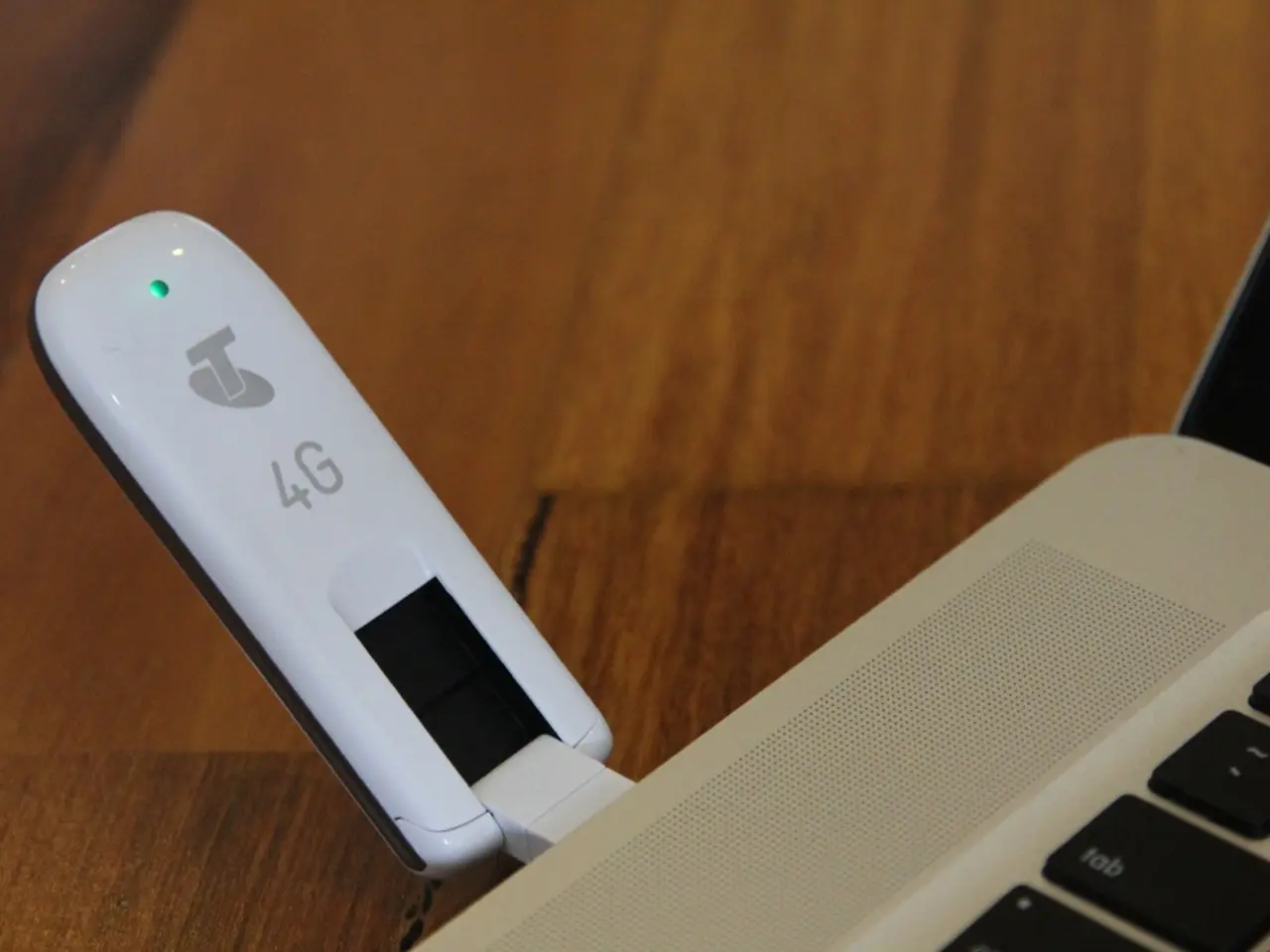Data Transmission Techniques: Discussing Simplex and Duplex in Data Communications and Networking
In the realm of data communications, the modes of transmission play a crucial role in shaping the way devices exchange information. These modes – simplex, half-duplex, and full-duplex – differ fundamentally in the direction and timing of data flow between devices.
Simplex Transmission
Communication in simplex mode is unidirectional, with data flowing only from sender to receiver. A classic example of simplex transmission is the keyboard to computer connection, or a traditional TV broadcast, where the sender sends data, while the receiver listens but does not respond [1][3].
Half-Duplex Transmission
Half-duplex communication, on the other hand, is bidirectional but not simultaneous. Devices can both send and receive data, but only one direction at a time, so the channel alternates between transmitting and receiving modes. An example of half-duplex communication is the use of walkie-talkies, where one party talks and the other listens, then they switch roles. Data can flow both ways but never at the same moment [1][3][5].
Full-Duplex Transmission
Full-duplex communication is bidirectional and simultaneous, allowing both devices to send and receive data at the same time over the same channel or separate channels. This provides the best performance and more efficient use of bandwidth. Telephone calls and Ethernet networks are excellent examples of full-duplex communication, where both parties can speak and listen simultaneously [3][5].
Technical Implementation Details
The choice of transmission mode depends on various factors, including the performance needs, cost, and complexity of the system. The table below summarises the data flow, channel usage, implementation details, and real-world examples for each mode.
| Mode | Data Flow | Channel Usage | Implementation Detail | Real-World Example | |-------------|------------------------------------------|-------------------------------------|---------------------------------------------------------|-----------------------------| | Simplex | One-way only | Entire channel capacity for one way | Uses a single simplex channel; no return path | Keyboard to PC, TV broadcast | | Half-duplex | Two-way, but one direction at a time | Channel shared alternately | Uses a single communication channel/channel shared with time division or control signaling to avoid collision | Walkie-talkies, CB radio | | Full-duplex | Two-way simultaneously | Separate channels or frequencies | Uses two simplex channels, one for each direction (e.g., two pairs of wires, two frequency bands) | Telephones, Ethernet (switched) |
In PCI Express (PCIe) technology, full-duplex is implemented using "dual simplex": each PCIe lane has two simplex channels—one for sending and one for receiving—so two-way communication happens simultaneously using separate physical pairs [2].
Summary
- Simplex is like a one-way street (only sender transmits, receiver listens).
- Half-duplex is a two-way street that only allows traffic in one direction at a time.
- Full-duplex is a two-way street with traffic allowed in both directions simultaneously.
These modes are chosen based on performance needs, cost, and complexity of the system. Full-duplex typically provides better performance but requires more complex hardware such as separate transmit and receive paths.
When designing networks, choosing the appropriate transmission mode has significant implications, including performance requirements, media selection, protocol selection, cost constraints, and power considerations.
Common issues in full-duplex systems include duplex mismatch, crosstalk between transmit and receive channels, echo and interference problems, and flow control complications. Understanding transmission modes is crucial for effective network troubleshooting, with different issues arising for simplex, half-duplex, and full-duplex systems.
In the future, trends in transmission modes include advanced full-duplex wireless, cognitive radio systems, quantum communication, massive MIMO and beamforming, and software-defined networking (SDN) [4]. Mastering these concepts will help system administrators, network engineers, and even casual technology users design, implement, and maintain effective communication systems in an increasingly connected world.
[1] Simplex communication [2] PCI Express [3] Half-duplex communication [4] Future trends in transmission modes [5] Full-duplex communication
- The keyboard to computer connection and traditional TV broadcast are examples of technology implementation using simplex transmission, a unidirectional mode where data flows from sender to receiver.
- In half-duplex transmission, devices can send and receive data but only in one direction at a time, as demonstrated by walkie-talkies where communication is alternated between send and receive.
- Full-duplex technology, like telephone calls and Ethernet networks, allows both devices to send and receive data simultaneously, offering better performance and efficient bandwidth usage.
- In the field of data-and-cloud-computing, technology like PCI Express (PCIe) implements full-duplex by using "dual simplex," wherein separate simplex channels are used for sending and receiving data in simultaneous two-way communication.




